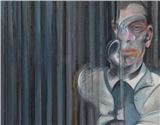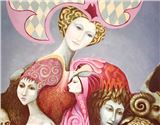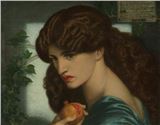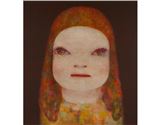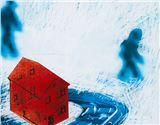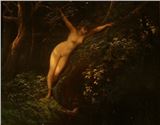Maaria Wirkkala: Landing Prohibited
Maaria WirkkalaвҖҷs Landing Prohibited, an installation which was displayed at the 52nd Venice Biennale in 2007 and acquired the same year by the ARTER Collection, is now set to meet audiences in Istanbul for the first time.
The artist, who spent her childhood not only in her homeland FinlandвҖҷs Helsinki in the south, and Lapland in the north, but also Venice in Italy, has positioned the ever-shifting elements of these geographies, such as water, air and light, at the centre of her practice since the 1980s. Her work Landing Prohibited consists of a вҖҳseaвҖҷ of broken glass, a traditional Venetian boat вҖ“ sandolo вҖ“ filled with water and gently rocking amidst this вҖҳseaвҖҷ, a glass ladder suspended from the ceiling, and a solitary oar resting against a wall. The fragments of broken glass, used by the artist to create a rough, treacherous sea that makes it impossible to reach the shore, come from the Venini Glass Factory on the island of Murano in Venice, where her father Tapio Wirkkala worked as a glass designer starting in the mid-1960s. Inspired by the вҖңLanding prohibitedвҖқ warning sign, frequently displayed along the canals of Venice, Maaria Wirkkala draws a parallel between this phrase and the anti-immigrant stance that prevails in many parts of the world, and references the perilous sea journeys undertaken by immigrants, which often end in tragedy.
Originally created for the Finnish Pavilion at the 52nd Venice Biennale and now reinterpreted for the gallery space at Arter, Landing Prohibited interweaves WirkkalaвҖҷs personal history and memories with enduring social and political issues.

Maaria WirkkalaвҖҷs Landing Prohibited, an installation which was displayed at the 52nd Venice Biennale in 2007 and acquired the same year by the ARTER Collection, is now set to meet audiences in Istanbul for the first time.
The artist, who spent her childhood not only in her homeland FinlandвҖҷs Helsinki in the south, and Lapland in the north, but also Venice in Italy, has positioned the ever-shifting elements of these geographies, such as water, air and light, at the centre of her practice since the 1980s. Her work Landing Prohibited consists of a вҖҳseaвҖҷ of broken glass, a traditional Venetian boat вҖ“ sandolo вҖ“ filled with water and gently rocking amidst this вҖҳseaвҖҷ, a glass ladder suspended from the ceiling, and a solitary oar resting against a wall. The fragments of broken glass, used by the artist to create a rough, treacherous sea that makes it impossible to reach the shore, come from the Venini Glass Factory on the island of Murano in Venice, where her father Tapio Wirkkala worked as a glass designer starting in the mid-1960s. Inspired by the вҖңLanding prohibitedвҖқ warning sign, frequently displayed along the canals of Venice, Maaria Wirkkala draws a parallel between this phrase and the anti-immigrant stance that prevails in many parts of the world, and references the perilous sea journeys undertaken by immigrants, which often end in tragedy.
Originally created for the Finnish Pavilion at the 52nd Venice Biennale and now reinterpreted for the gallery space at Arter, Landing Prohibited interweaves WirkkalaвҖҷs personal history and memories with enduring social and political issues.
Artists on show
Contact details


 ARTISTS
ARTISTS
